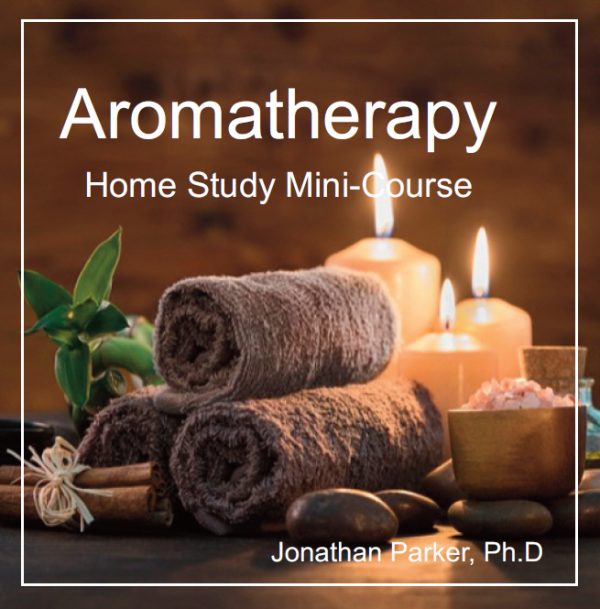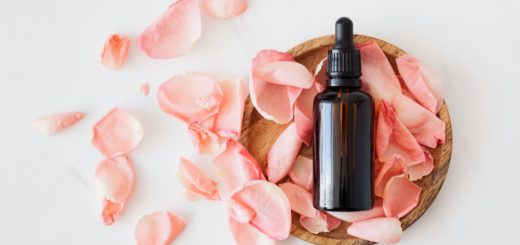Can Essential Oils Go Bad? Signs to Watch For

Hey there, amazing readers! 🖐️ Just a quick note: yes, we know there are a lot of ads here. Trust us, we get it—it’s not the prettiest look, but they help us keep this blog alive and kicking. Those pesky little ads cover the costs of all the behind-the-scenes magic, from hosting and tech stuff to creating content we hope you’ll love.
We’re committed to delivering quality posts, and your support (even just sticking around despite the ads) means everything to us. So, bear with us, and thanks for helping us keep the good vibes rolling. Now, on to the fun stuff! 😉
TRANSLATE BUTTON AT THE END OF THE ARTICLE
A Quick Overview
Essential oils have gained immense popularity in recent years.
People use them for everything from aromatherapy to personal care products.
But have you ever wondered if these fragrant liquids can go bad?
Spoiler alert: they can!
Just like that leftover pizza in your fridge, essential oils have a shelf life.
Today, let’s explore how to tell if your beloved oils have soured, what you can do to keep them fresh, and when it’s time to toss them.
Understanding Essential Oils and Their Shelf Life
Essential oils are concentrated extracts derived from plants.
They capture the plant’s scent and flavor, often referred to as its "essence." But here’s the kicker: while these oils can last a long time, they don’t last forever.
The shelf life of essential oils varies widely, typically lasting anywhere from 1 to 7 years, depending on the type of oil and how you store it.
For example, citrus oils like lemon and orange tend to oxidize more quickly, usually lasting about 1 to 2 years.
In contrast, oils like sandalwood and patchouli can maintain their potency for up to 5 years or even longer.
It’s essential to understand that even though they may still smell okay, degradation can happen without any obvious signs.
How can you tell if your oils are past their prime?
Well, let’s dive into the science behind essential oils and degradation.
The Science Behind Essential Oils and Degradation
Essential oils contain various chemical compounds responsible for their aroma and therapeutic properties.
Over time, these compounds can break down due to exposure to air, light, and heat.
This degradation is often accelerated by improper storage.
You see, when oxygen interacts with the oil, it can lead to oxidation.
This process can alter the chemical structure of the oil, resulting in unpleasant smells or even skin irritation.
To illustrate, think of a cut apple.
Once you slice it open and expose it to air, it starts to brown and lose its fresh taste.
Similarly, when essential oils are exposed to air, their compounds can oxidize and lose their delightful fragrance and benefits.
Some oils, like lavender, contain esters that may become more potent with age, while others can become irritating or even toxic.
This makes it crucial to monitor your oils regularly.
Common Signs That Essential Oils Have Gone Bad
So, how do you know when your oils have gone bad?
Here are some signs to watch out for:
Change in Aroma: If the scent is off or smells rancid, it’s a red flag.
Cloudiness: Pure essential oils should be clear.
If yours looks murky, toss it.
Sediment: If you see floating particles or sediment at the bottom, it’s time for a replacement.
Color Changes: A noticeable darkening or alteration in color can signal degradation.
Skin Reactions: If your skin reacts differently than before, discontinue use immediately.
If you notice one or more of these signs, don’t hesitate to say goodbye to the oil.
It’s better to be safe than sorry, especially when it comes to skin application.
How to Identify Changes in Aroma and Color
Changes in aroma and color can be subtle but significant.
Take a moment to familiarize yourself with each oil’s typical scent profile and appearance.
Aroma: Keep a scent journal!
Jot down how each oil smells when you first purchase it.
This way, you can compare it later if you suspect it’s gone bad.
Color: Use a small glass droplet to transfer oils when testing for color changes.
This prevents contamination and allows you a clearer view.
Remember, your nose and eyes are your best tools.
If something doesn’t smell right or looks off, trust your instincts.
The Importance of Proper Storage for Longevity
Proper storage is key in prolonging the life of your essential oils.
Here are some simple storage tips to keep them fresh:
Dark Glass Bottles: Store oils in dark amber or cobalt blue glass bottles.
This protects them from light.
Cool, Dry Place: Keep them away from heat sources and humidity.
A closet in a cool room works wonders.
Tightly Sealed: Make sure the caps are secure to minimize air exposure.
I’ve learned the hard way that neglecting these storage tips can lead to disappointing results.
Expiration Dates: What to Look For on Labels
When purchasing essential oils, you might notice some bottles have an expiration date or a "best by" date.
This can provide a helpful guideline.
Manufacture Date: Look for when the oil was bottled.
The fresher, the better!
Expiration Dates: If present, stick to these dates for optimal quality.
Batch Numbers: Some suppliers include batch numbers that can help you track down specific qualities for that particular oil.
Always check the label before investing in an essential oil.
A little diligence can save you from disappointment.
Distinguishing Between Pure and Adulterated Oils
Another layer of complexity comes from the quality of essential oils.
Not all oils are created equal.
Some may be adulterated with synthetic compounds, which can affect their shelf life and efficacy.
Look for Certification: Go for oils that are labeled “100% pure.”
Check Ingredients: Read the back label.
If you see a long list of ingredients, chances are it’s not pure.
Research Brands: Find reputable brands known for quality and transparency.
I’ve found that sticking to trusted brands has made a world of difference.
It’s all about investing in quality.
How Temperature Affects Essential Oil Quality
Temperature plays a crucial role in essential oil preservation.
When oils get too hot, they can degrade faster.
Ideal Temperature: Aim for a range between 60°F to 70°F (15°C to 21°C) for optimal storage.
Avoid Freezing: While it might seem like a good idea, freezing can alter the oil’s composition.
Remember my friend who left their oils in a hot car?
Let’s just say the once lovely lavender was no longer lovely.
The Role of Light in Essential Oil Preservation
Light is another enemy of essential oils.
Direct sunlight can cause oxidation and ruin the oil’s potency.
Keep Away from Windows: Store oils away from sunlight or bright light.
Use Dark Storage Boxes: Consider keeping your oils in a dark cabinet or a box specifically designed for storage.
I once thought a sunny windowsill looked pretty for my oils.
Lesson learned!
Tips for Extending the Life of Your Essential Oils
Want to make your oils last longer?
Here are my tried-and-true tips:
Stick to Glass: Always use glass containers, as plastic can react with oils.
Limit Air Exposure: Minimize how often you open bottles.
Rotate Your Stock: Use older oils first to prevent aging.
Keeping your oils fresh doesn’t have to be complicated.
A few small changes in your routine can make a world of difference.
Safe Practices for Disposing of Expired Oils
Eventually, the time will come when you need to part ways with expired oils.
Here’s how to do it safely:
Check Local Guidelines: Some areas have specific disposal regulations for hazardous materials.
Do Not Pour Down the Drain: This can contaminate water systems.
Use in DIY Projects: If the oil is just slightly off, consider using it for household cleaning.
This way, you can minimize waste while keeping your environment safe.
Embracing Freshness: When to Replace Your Oils
As a general rule of thumb, we should replace essential oils every 1 to 3 years, depending on the type.
Citrus Oils: Replace every year for the best quality.
Woodsy Oils: 3 to 5 years is a good benchmark.
Floral Oils: Keep an eye on them; they can be tricky!
It’s all about knowing your oils.
And when in doubt, trust your nose.
Conclusion
Essential oils can indeed go bad, but with some simple tips and attention, you can keep them fresh longer.
Pay attention to signs of degradation, store them properly, and regularly check their quality.
This way, you can enjoy the delightful aromas and therapeutic benefits they offer without worry.
So go ahead, get those oils out, and breathe in the goodness—just make sure they’re still good!

The Enlightenment Journey is a remarkable collection of writings authored by a distinguished group of experts in the fields of spirituality, new age, and esoteric knowledge.
This anthology features a diverse assembly of well-experienced authors who bring their profound insights and credible perspectives to the forefront.
Each contributor possesses a wealth of knowledge and wisdom, making them authorities in their respective domains.
Together, they offer readers a transformative journey into the realms of spiritual growth, self-discovery, and esoteric enlightenment.
The Enlightenment Journey is a testament to the collective expertise of these luminaries, providing readers with a rich tapestry of ideas and information to illuminate their spiritual path.
Our Diverse Expertise 🌟
While our primary focus is on spirituality and esotericism, we are equally passionate about exploring a wide range of other topics and niches 🌍📚. Our experienced team is dedicated to delivering high-quality, informative content across various subjects ✨.
To ensure we provide the most accurate and valuable insights, we collaborate with trusted experts in their respective domains 🧑🏫👩🏫. This allows us to offer well-rounded perspectives and knowledge to our readers.
Our blog originally focused on spirituality and metaphysics, but we’ve since expanded to cover a wide range of niches. Don’t worry—we continue to publish a lot of articles on spirituality! Frequently visit our blog to explore our diverse content and stay tuned for more insightful reads.






